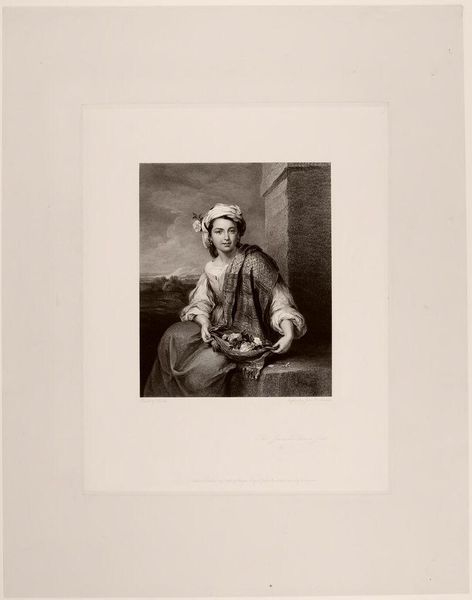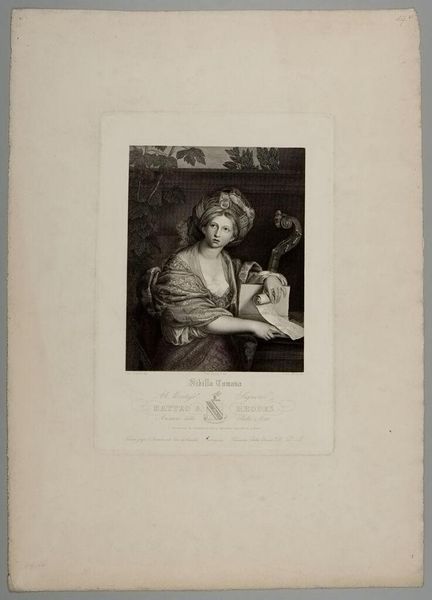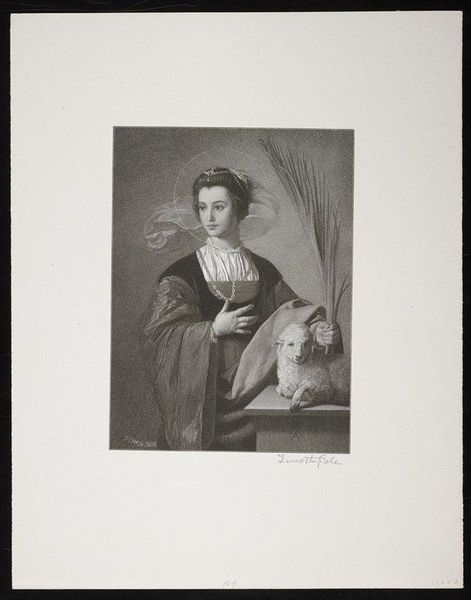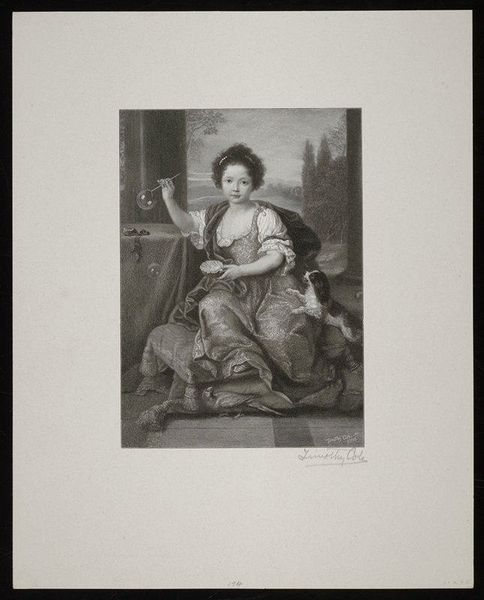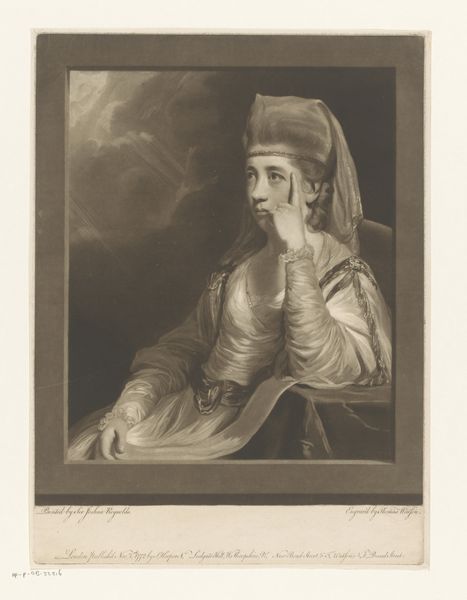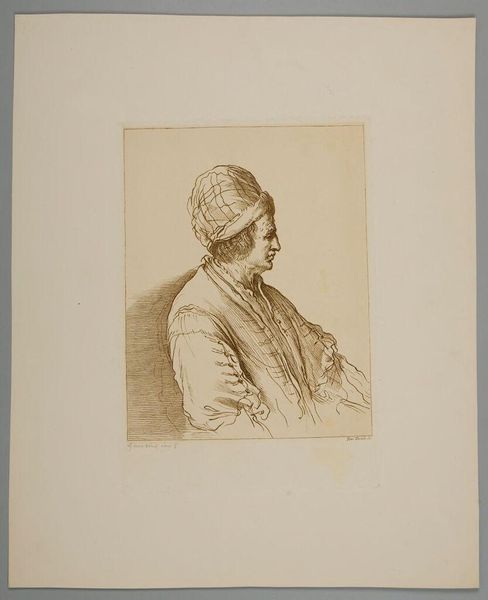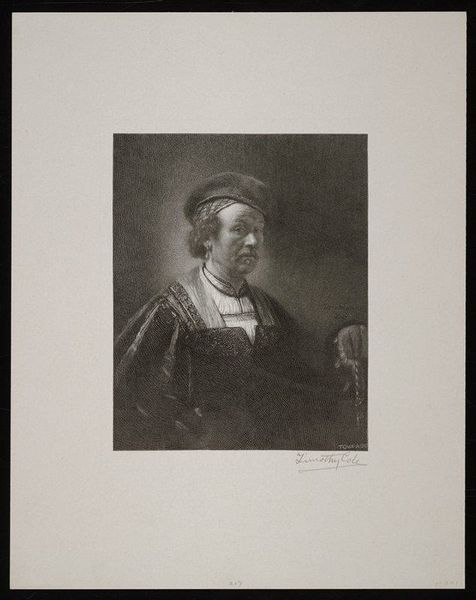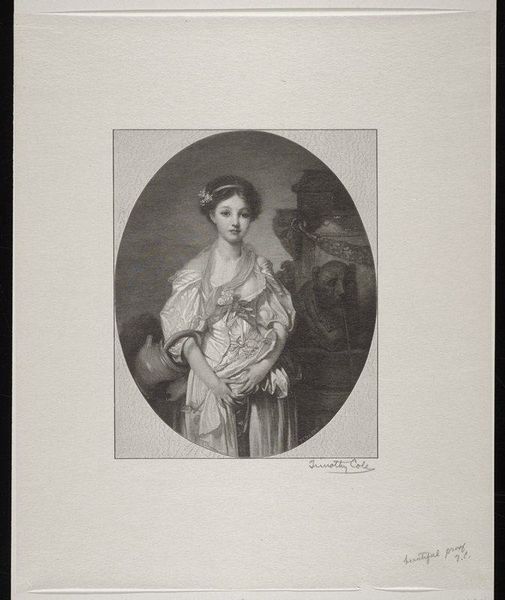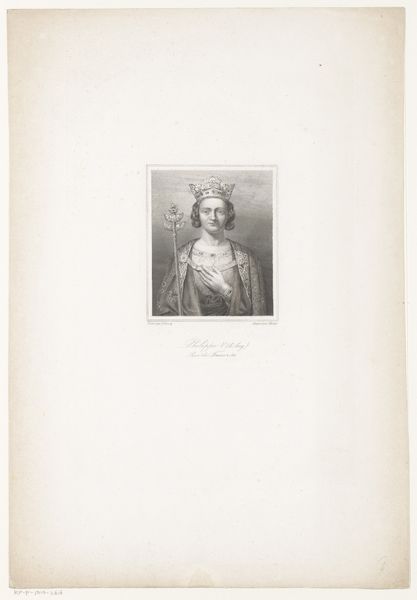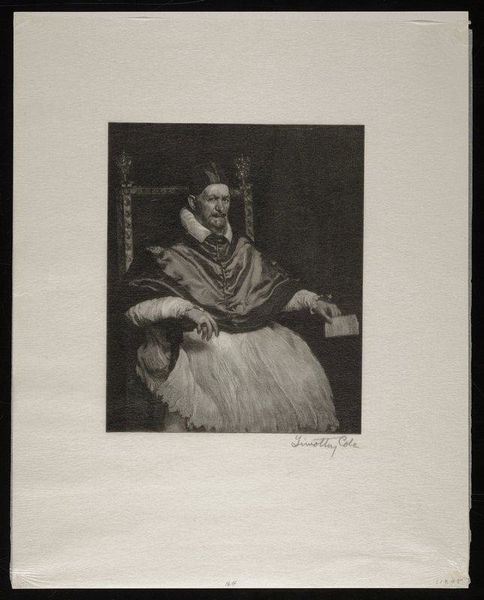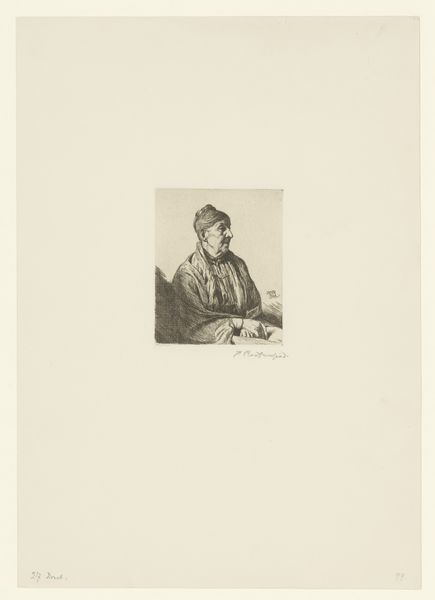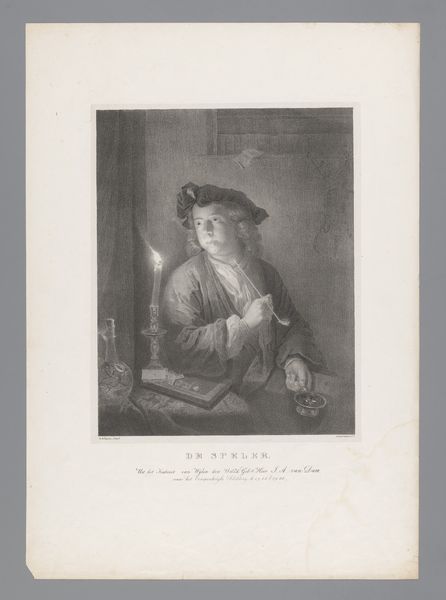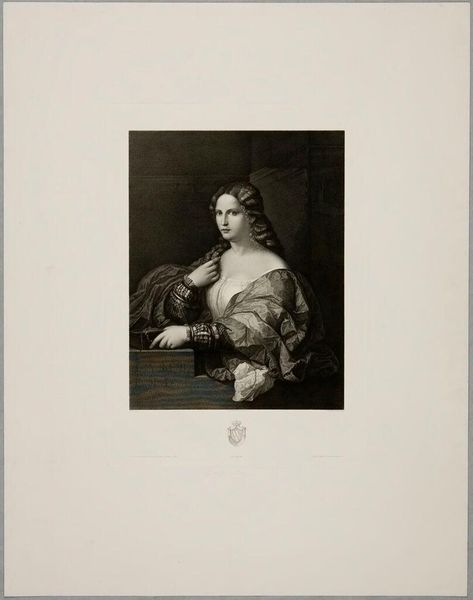
Dimensions: 7 1/4 x 5 1/8 in. (18.42 x 13.02 cm) (image)12 9/16 x 9 1/2 in. (31.91 x 24.13 cm) (sheet)
Copyright: No Copyright - United States
Curator: This is Timothy Cole's "A Spanish Flower Girl," a wood engraving from 1906, now residing here at the Minneapolis Institute of Art. Editor: It's strikingly serene. The composition is balanced, but the greyscale palette almost makes it feel like a fading memory. Curator: Let's consider the socio-political dynamics at play here. Cole, an American artist, represents a "Spanish Flower Girl." What assumptions, or perhaps fantasies, are being projected onto this subject? The era's fascination with the "exotic" requires a critical lens. How does it sit within debates around orientalism or the "gaze?" Editor: That's interesting because I’m drawn to the pure craft, you know? Look at the quality of the wood engraving; think about the labor involved in carving those fine lines to achieve those tonal gradations. The material itself, the wood, holds its own history too; its grain, where it was sourced, how it was processed. Curator: Precisely, and her garb...the shawl, the turban… Are these authentic representations, or romanticized props reinforcing existing power structures? It prompts a discussion about cultural appropriation and the artist's own position of privilege. Consider it within the context of Spanish society and the visibility, or invisibility, of similar figures. Editor: And speaking of “props,” notice how her hands cradle those flowers. What specific variety are they? Are they locally grown? Are they readily accessible or only available for particular communities? These details create social tiers for those who acquire or produce them. Curator: This piece seems ripe with commentary. But if we push harder, perhaps that surface appeal distracts from something deeper. What were the prevailing attitudes towards gender, ethnicity, and class? Art cannot, and must not, escape those realities. Editor: Indeed, I also appreciate that Timothy Cole selected this painstaking, handcrafted medium to create this photorealistic reproduction. The amount of time involved... the manual labor of such exacting printmaking creates value but only if that labor is celebrated. Curator: Ultimately, reflecting on such art helps us question whose stories are being told, and by whom. Editor: Right, I never would have considered it that way, but it brings so many questions of materiality and the hand back to the forefront for me.
Comments
No comments
Be the first to comment and join the conversation on the ultimate creative platform.
